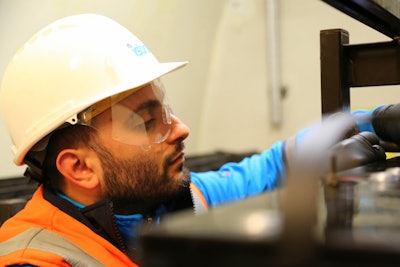
Hazard monitoring is an essential component of OSHA safety compliance and a successful HACCP plan. 4B Components Ltd.'s senior territory manager Gil Garcia shared his experience conducting an annual audit, with an emphasis on comprehensive hazardous monitoring on the TECHTalk stage at the 2024 International Production and Processing Expo (IPPE).
"Identifying potential safety hazards allows a proactive approach to minimizing the risk of injuries and catastrophic events," he said, pointing to audits as a key way to make these observations.
Garcia highlighted the importance of pinpointing areas where combustible dust accumulates, underscoring the need for a well-thought-out action plan to address these risks.
"The dangers of a combustible dust explosion are real, and understanding these risks is crucial for implementing effective safety measures," he said.
As the discussion shifted to compliance, Garcia stressing that a safety audit "should be a systematic review and assessment of varying temperatures, belt alignment, and speed sensors to ensure compliance with local, state, and federal regulations. An audit should balance possible losses or increases against adequate safeguards, ensuring compliance with OSHA regulations."
OSHA's stringent guidelines on combustible dust and "failure to comply with these regulations can result in fines, legal liabilities, and damage to your company's good reputation."
He outlined OSHA's specific requirements for monitoring temperature, belts, and speed, emphasizing the critical role these play in preventing potential hazards and encouraged taking an inquisitive approach during facility inspections and scrutinize all areas thoroughly.
"Be inquisitive and take a discriminating eye, looking at all areas of your facility," he advised, illustrating this point with examples, such as examining the temperature sensor installation for rigidity and the presence of access doors in case of belt misalignment.
Comprehensive checklists and documented testing procedures are essential to ensure the success of hazard monitoring efforts.
"You should have a standard compliance checklist, lockout tagout procedures, and documented procedures for accessing confined spaces and permit requirements," he said.
He emphasized the importance of regularly testing critical safety devices, encouraging facility managers to be proactive in addressing issues.
Organizations should emphasize proactive hazard identification, OSHA compliance, and systematic audits serves as a guiding light for those navigating the complexities of workplace safety.
















